Skin rash in folds of skin. Intertrigo: Causes, Symptoms, and Effective Treatments for Skin Fold Rashes
What is intertrigo and how does it develop. How can you identify the symptoms of intertrigo. What are the most effective treatments for skin fold rashes. How can you prevent intertrigo from occurring or recurring.
Understanding Intertrigo: A Common Skin Fold Condition
Intertrigo is a widespread skin condition that occurs in areas where skin rubs against skin, particularly in moist, warm environments. This inflammatory rash typically develops in skin folds, causing discomfort and potential complications if left untreated.
Are certain individuals more susceptible to intertrigo? While it can affect anyone, intertrigo is more prevalent in:
- Infants and young children
- Older adults
- People with weakened immune systems
- Those who are overweight or obese
- Individuals with diabetes
- People living in hot and humid climates
Identifying the Signs and Symptoms of Intertrigo
Recognizing intertrigo early can lead to prompt treatment and relief. The primary symptoms include:
- Redness in skin folds
- Itching or burning sensation
- Discomfort or pain in affected areas
- Possible oozing or crusting of the skin
- Unpleasant odor in severe cases
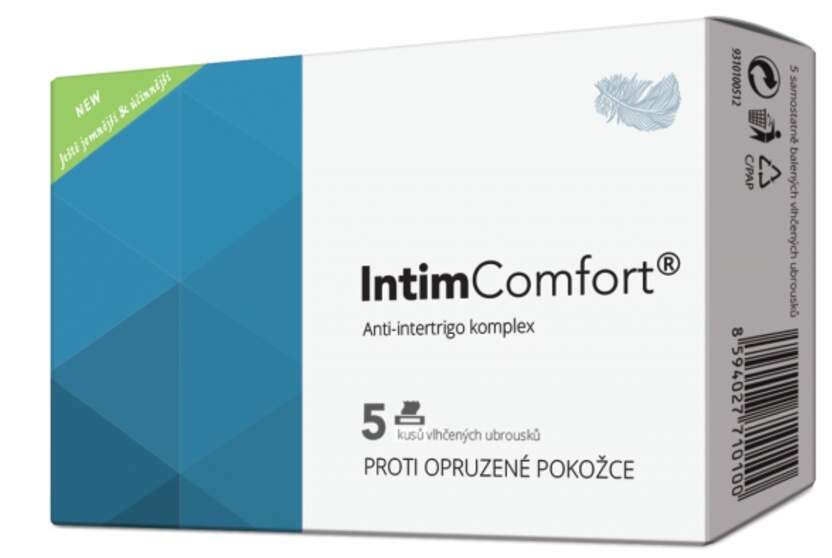
Where does intertrigo commonly occur? The most frequently affected areas include:
- Armpits
- Under and between breasts
- Groin area
- Buttocks
- Between toes
- Neck folds
- Abdominal folds
The Root Causes of Intertrigo Development
Understanding the factors that contribute to intertrigo can help in prevention and management. The primary causes include:
- Friction between skin surfaces
- Excessive moisture in skin folds
- Warm temperatures in affected areas
- Poor air circulation in skin folds
- Excessive sweating (hyperhidrosis)
Can intertrigo lead to secondary infections? Yes, the moist, warm environment created by intertrigo provides an ideal breeding ground for microorganisms. Secondary infections may be caused by:
- Fungi (most commonly Candida species)
- Bacteria (such as Staphylococcus and Streptococcus)
- Viruses (including HPV and herpes simplex)
Effective Treatment Options for Intertrigo
Treatment for intertrigo aims to reduce inflammation, manage symptoms, and prevent secondary infections. The approach may vary depending on the severity and presence of complications.
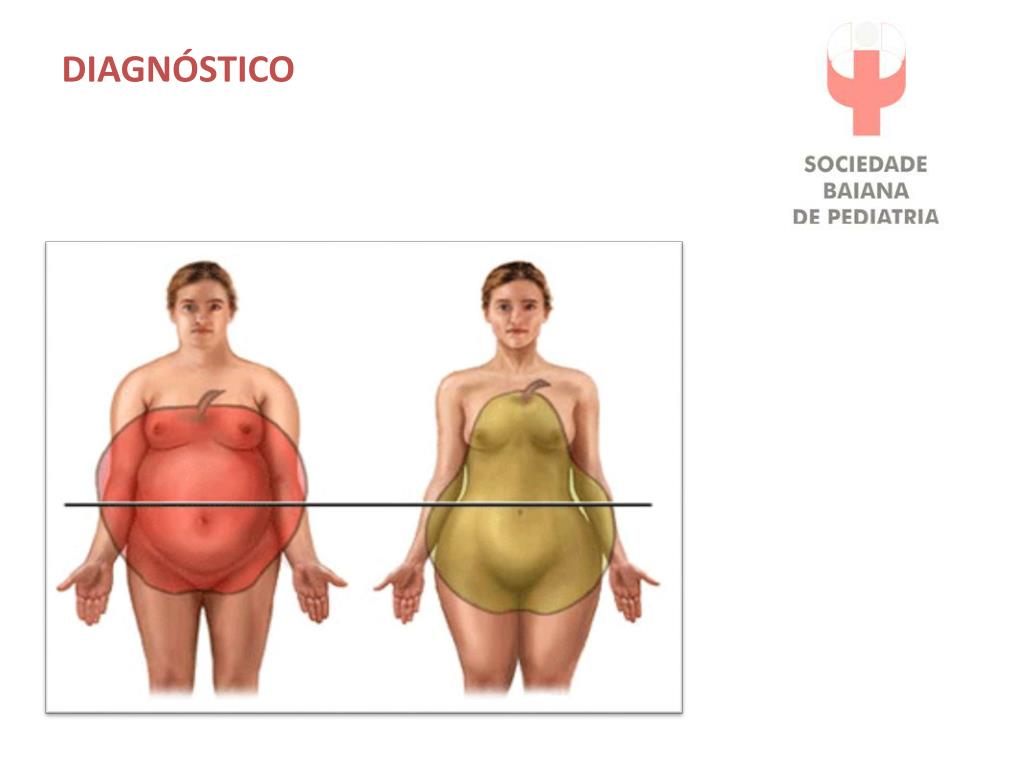
Topical Treatments
What are the first-line treatments for intertrigo? Topical interventions often include:
- Barrier creams or ointments (e.g., zinc oxide)
- Antifungal creams (for fungal infections)
- Antibacterial ointments (for bacterial infections)
- Mild corticosteroid creams (for inflammation)
- Drying powders (to reduce moisture)
Systemic Treatments
In severe cases or when topical treatments are insufficient, systemic treatments may be necessary:
- Oral antifungal medications
- Systemic antibiotics
- Immunomodulators (in resistant cases)
Home Remedies and Lifestyle Changes for Managing Intertrigo
Alongside medical treatments, several home remedies and lifestyle modifications can help manage intertrigo:
- Keep affected areas clean and dry
- Use absorbent fabrics or moisture-wicking clothing
- Apply talcum powder to reduce friction
- Use antiperspirants in prone areas
- Maintain a healthy weight
- Practice good hygiene after exercise or sweating
How can you safely clean affected areas? Gently wash with mild, fragrance-free soap and lukewarm water. Pat the area dry thoroughly, avoiding rubbing which can cause further irritation.

Preventing Intertrigo: Strategies for Long-Term Skin Health
Prevention is key in managing intertrigo. Implementing these strategies can help reduce the risk of occurrence or recurrence:
- Maintain proper hygiene in skin fold areas
- Use moisture-absorbing powders in prone areas
- Wear loose-fitting, breathable clothing
- Change out of wet or sweaty clothes promptly
- Manage underlying conditions like diabetes or obesity
- Use skin fold separators or pads to reduce friction
Is diet important in preventing intertrigo? While not directly linked, a balanced diet that supports overall skin health and immune function can be beneficial. Focus on foods rich in vitamins A, C, and E, as well as zinc and omega-3 fatty acids.
When to Seek Medical Attention for Intertrigo
While mild cases of intertrigo can often be managed at home, certain situations warrant professional medical attention:
- Persistent or worsening symptoms despite home treatment
- Signs of infection (increased redness, warmth, swelling, or pus)
- Fever or general feeling of illness
- Spread of the rash to new areas
- Severe pain or discomfort
- Recurring episodes of intertrigo
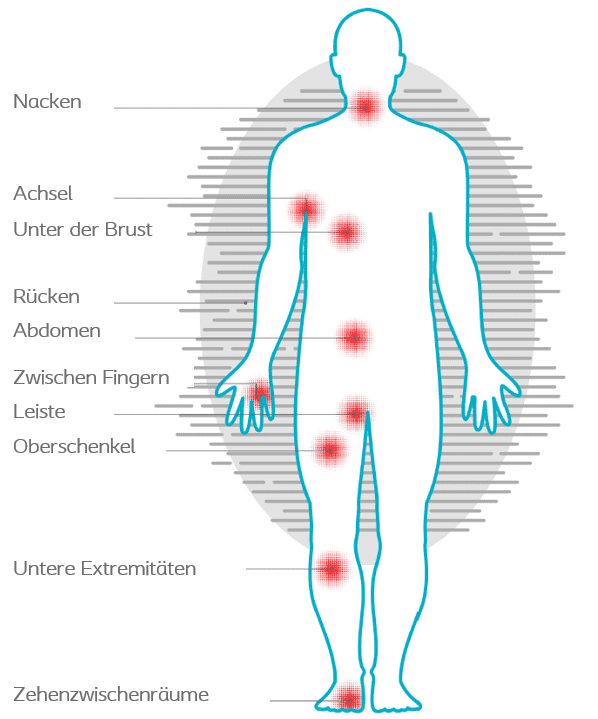
What can you expect during a medical consultation for intertrigo? A healthcare provider will typically:
- Examine the affected areas
- Ask about symptoms and duration
- Review your medical history
- Possibly take skin samples for testing
- Recommend appropriate treatment options
Special Considerations: Intertrigo in Different Populations
Intertrigo in Infants and Children
Intertrigo is common in babies, often manifesting as diaper rash. Key considerations include:
- Frequent diaper changes
- Use of barrier creams
- Allowing diaper-free time
- Gentle cleaning with each diaper change
Intertrigo in Older Adults
Elderly individuals may be more prone to intertrigo due to:
- Decreased mobility
- Incontinence issues
- Weakened immune systems
- Medications that affect skin integrity
How can caregivers help prevent intertrigo in older adults? Regular skin checks, proper hygiene practices, and use of moisture-barrier products can significantly reduce the risk.
Intertrigo in People with Obesity
Individuals with obesity face unique challenges in managing intertrigo:
- More skin folds prone to friction and moisture
- Increased difficulty in maintaining dryness in skin folds
- Higher risk of yeast overgrowth

What strategies can help obese individuals manage intertrigo? Weight management, use of absorbent fabrics, and regular application of anti-chafing products can be beneficial.
Emerging Treatments and Research in Intertrigo Management
The field of dermatology continues to evolve, bringing new possibilities for intertrigo treatment:
- Novel topical formulations with combined anti-inflammatory and antimicrobial properties
- Advanced moisture-wicking fabrics for clothing and undergarments
- Probiotics and microbiome-based therapies
- Photodynamic therapy for resistant cases
- Innovative delivery systems for medications
How might future treatments improve intertrigo management? Emerging therapies aim to provide more targeted, efficient, and long-lasting relief while minimizing side effects and reducing the risk of recurrence.
Living with Intertrigo: Coping Strategies and Quality of Life
Dealing with intertrigo can impact daily life and self-esteem. Coping strategies include:
- Educating oneself about the condition
- Joining support groups or online communities
- Practicing stress-reduction techniques
- Maintaining open communication with healthcare providers
- Adapting clothing choices for comfort and prevention

Can lifestyle modifications significantly improve quality of life for those with recurrent intertrigo? Absolutely. Many individuals find that a combination of preventive measures, prompt treatment, and lifestyle adjustments can greatly reduce the frequency and severity of outbreaks, leading to improved comfort and confidence.
The Role of Skin Microbiome in Intertrigo Development and Treatment
Recent research has highlighted the importance of the skin microbiome in maintaining skin health and potentially influencing intertrigo development:
- Balanced microbiome may help prevent overgrowth of harmful organisms
- Certain beneficial bacteria might compete with pathogenic species
- Probiotics (topical or oral) could play a role in prevention and treatment
- Personalized treatments based on individual microbiome profiles may be possible in the future
How does the skin microbiome interact with intertrigo? The delicate balance of microorganisms on the skin can be disrupted in the moist, warm environment of skin folds, potentially contributing to intertrigo development. Understanding and modulating this microbiome could lead to more effective prevention and treatment strategies.

Environmental Factors and Intertrigo: Climate, Occupation, and Lifestyle
Various environmental factors can influence the occurrence and severity of intertrigo:
- Hot and humid climates increase risk
- Certain occupations (e.g., athletes, healthcare workers) may have higher exposure to moisture and friction
- Clothing choices can impact skin fold environments
- Regular exposure to water (swimmers, lifeguards) may increase susceptibility
How can individuals in high-risk environments protect themselves? Implementing rigorous skin care routines, using appropriate protective gear, and making mindful lifestyle choices can significantly reduce the risk of intertrigo in challenging environments.
Intertrigo and Associated Skin Conditions: Differential Diagnosis
Intertrigo can sometimes be confused with other skin conditions that affect skin folds. Differential diagnosis may include:
- Inverse psoriasis
- Seborrheic dermatitis
- Contact dermatitis
- Erythrasma
- Tinea infections
Why is accurate diagnosis crucial for effective treatment? Each condition requires a specific treatment approach. Misdiagnosis can lead to ineffective treatments and potentially worsen the condition. Healthcare providers use a combination of visual examination, patient history, and sometimes laboratory tests to ensure accurate diagnosis.
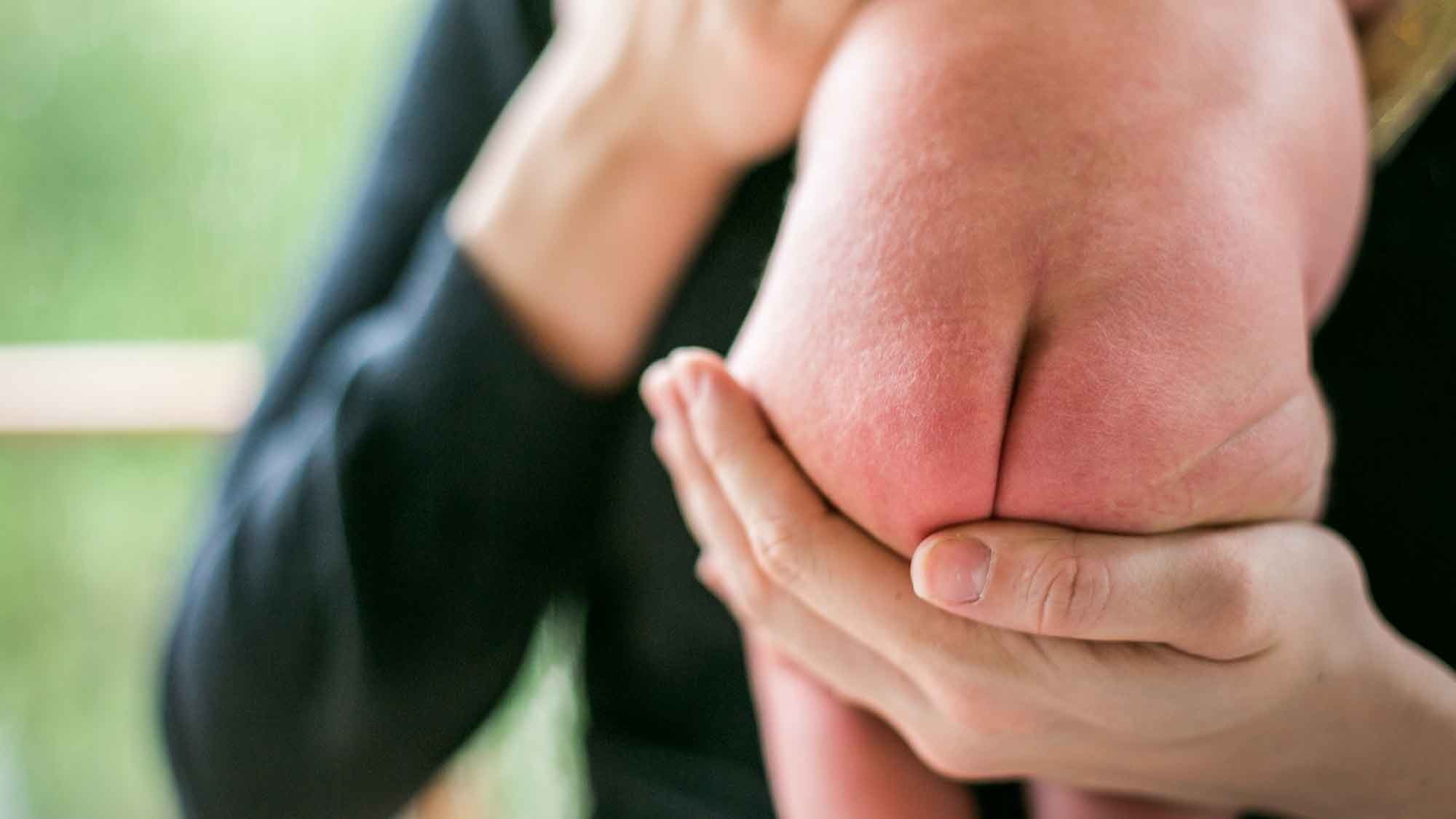
The Psychological Impact of Chronic Intertrigo
Living with recurrent or chronic intertrigo can have significant psychological effects:
- Reduced self-esteem and body image issues
- Social anxiety and withdrawal
- Depression or mood changes
- Stress, which can further exacerbate skin conditions
- Impact on intimate relationships
How can healthcare providers address the psychological aspects of intertrigo? A holistic approach that combines physical treatment with psychological support can be beneficial. This may include referrals to mental health professionals, support groups, or counseling services to help patients cope with the emotional challenges of living with a chronic skin condition.
Intertrigo in Special Situations: Pregnancy, Postoperative Care, and Chronic Illness
Certain life stages and health conditions can present unique challenges in managing intertrigo:
- Pregnancy: Hormonal changes and weight gain can increase risk
- Postoperative patients: Limited mobility and wound care can complicate management
- Chronic illnesses: Conditions like diabetes or autoimmune disorders may affect skin health and healing

What special considerations are necessary for these groups? Tailored prevention strategies, careful selection of safe treatment options, and close monitoring by healthcare providers are essential. For example, pregnant women may need to avoid certain medications, while diabetic patients might require more aggressive infection prevention measures.
The Economic Burden of Intertrigo: Healthcare Costs and Quality of Life
The impact of intertrigo extends beyond physical discomfort, affecting healthcare systems and individual finances:
- Direct costs: Medical consultations, treatments, and potential hospitalizations
- Indirect costs: Lost productivity, time off work
- Long-term expenses: Chronic management and prevention measures
- Quality of life costs: Impact on daily activities and personal relationships
How can early intervention and prevention strategies reduce the economic burden of intertrigo? Proactive management and patient education can significantly decrease the need for extensive medical interventions, reducing both personal and healthcare system costs in the long run.
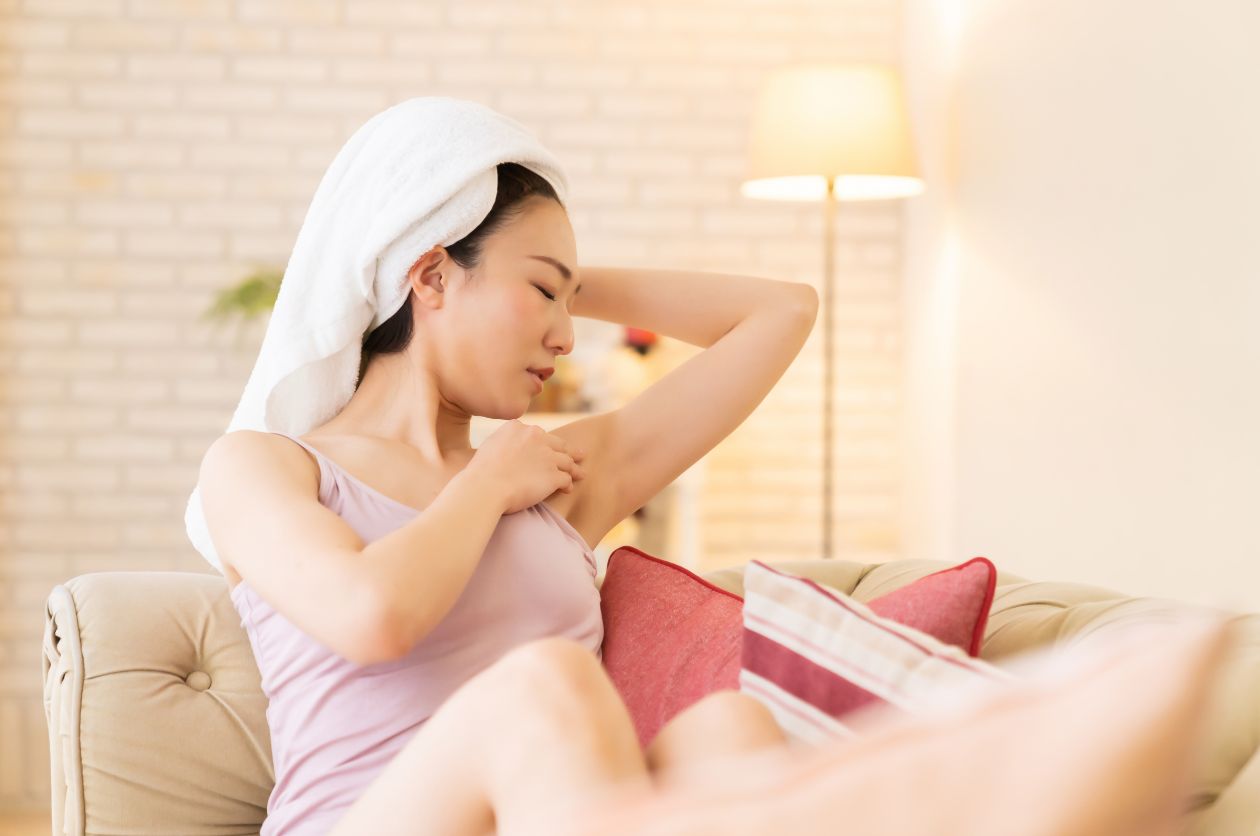
Integrative Approaches to Intertrigo Management
Combining conventional treatments with complementary therapies may offer comprehensive relief for some individuals:
- Herbal remedies with antimicrobial properties (e.g., tea tree oil, calendula)
- Dietary supplements to support skin health
- Stress-reduction techniques like meditation or yoga
- Acupuncture for pain relief and healing promotion
- Natural fiber clothing and bedding to improve skin breathability
What precautions should be taken when considering integrative approaches? It’s crucial to consult with healthcare providers before incorporating complementary therapies, as some may interact with conventional treatments or be unsuitable for certain individuals. A balanced, evidence-based approach that combines the best of conventional and complementary medicine can offer optimal results for many patients.
In conclusion, intertrigo is a common yet manageable skin condition that affects many individuals across various demographics. By understanding its causes, recognizing its symptoms, and implementing effective prevention and treatment strategies, those affected by intertrigo can significantly improve their quality of life. As research continues to advance our understanding of skin health and innovative therapies emerge, the outlook for intertrigo management continues to improve, offering hope for more effective, personalized approaches to care.

Treatment, Signs, Pictures, and Prevention
Intertrigo is a skin condition that can occur anywhere on the body where skin touches skin. Medical treatment and at home prevention can help clear the rash and reduce irritation.
Skin conditions commonly affect the folds of the skin, especially when the skin is wet or sweaty. This can lead to irritation, inflammation, and even infection. Intertrigo, a common skin condition that can occur in the folds of the skin, is characterized by red, inflamed skin that may be itchy or painful.
The good news? With some know-how, you can often treat it at home and prevent it from returning. Here’s how to spot an intertrigo rash and what you can do about it at home and with a doctor’s help.
Intertrigo is a reddish rash that appears in skin folds, where your skin surfaces rub against each other. The rash can be itchy or painful, but it’s not contagious.
Bacteria, fungus, and viruses can easily grow in this warm and moist environment and worsen the rash.
The skin areas most often affected include your:
- armpits
- underneath and between breasts
- groin
- buttocks
- between toes
Friction from skin rubbing on skin, moisture, and higher temperature in flexural areas are the main factors in the development of intertrigo.
These areas are often moist, warm, and lack air exposure. This makes them perfect breeding areas for microorganisms. These bacteria or fungi worsen the rash and its symptoms.
Secondary intertrigo infections could include:
Fungi
Candida (a yeast) is the fungus group that’s most commonly associated with intertrigo. About 80% to 90% of all skin yeast infections are caused by Candida albicans (also called thrush).
Most people normally have some Candida albicans present on their skin, so the yeast can easily take advantage of skin breaks to proliferate. A Candida rash is very bright red and raw looking. It may have plaques, which are raised, scaly lesions. Papules and pustules (pimple-like bumps) may be present as well.
It may have plaques, which are raised, scaly lesions. Papules and pustules (pimple-like bumps) may be present as well.
Bacteria
Bacteria associated with intertrigo include:
- staphylococci
- streptococci
- Pseudomonas
- Corynebacterium
Viruses
The most common virus families associated with intertrigo are:
- Poxviridae
- Papillomaviridae (human papilloma virus or HPV)
- Picornaviridae
- Retroviridae (HIV)
- Herpesviridae
- Togaviridae
- Parvoviridae
In some cases, intertrigo occurs as a side effect of chemotherapy treatment.
Intertrigo starts as redness or small bumps or spots in skin folds. The rash can feel:
- itchy
- uncomfortable
- burning
- prickly
- painful
The intertrigo often appears on both sides of the skin fold, almost like a mirror image. Infections are more likely to be unilateral and asymmetrical, while inflammatory disorders tend to be symmetrical, appearing, for example, under both arms or both breasts.
The reddish area can quickly become inflamed and raw. The skin may crack, bleed, ooze, and crust over. The surrounding area may become scaly.
If you have a secondary infection from bacteria, fungus, or a virus, the intertrigo becomes more inflamed and can develop a bad smell. Intertrigo with a secondary infection is often asymmetrical (not even or present on both sides).
You may have intertrigo in more than one skin area. Also, smaller skin fold areas, such as behind your ears, around your chin, or on your eyelids, can be affected.
Intertrigo symptoms often get worse when the area comes in contact with your bodily secretions, such as sweat, urine, or feces.
Intertrigo is common and can occur at any age, but according to a 2014 article, it’s more common in the very young and in older people. In babies, intertrigo most often appears as diaper rash.
People with a weakened immune system or who are incontinent or immobile are more likely to have intertrigo. It’s also more common in hot and humid weather.
It’s also more common in hot and humid weather.
Treatment for intertrigo is usually a skin cream and a good home hygiene regimen to keep the area clean and dry. The type of topical drug depends on whether bacteria or yeast are involved. In more severe cases, you may need to take oral medication.
When intertrigo is inflammatory only, with no infection, treatment is straightforward: Keep the area clean and dry and follow some of the home remedy suggestions below.
There are also several solutions that may help to control intertrigo. A doctor may suggest:
- antiperspirants
- triple paste with zinc oxide, aluminum acetate, and petrolatum
- petroleum jelly (Vaseline)
- talcum powder
If you have an infection with the intertrigo, the doctor will prescribe specific topical creams.
Your treatment for intertrigo will depend on the cause and the type of infection you have. We’ll go over bacterial and yeast infections below.
In extreme cases, some women have undergone breast reduction surgery to reduce chronic intertrigo.
Keep it clean and dry
The number one rule is to keep the area clean and dry.
If you exercise, shower afterward and pat yourself dry. Don’t rub your skin, as this can cause increased irritation and damage to the skin.
Use anti-chafing or barrier gels
If the intertrigo is inflammatory only, without an infection, use over-the-counter (OTC) creams to create a barrier between the skin folds. Creams or ointments with zinc oxide or petrolatum can be useful. There are also anti-chafing balms that come in stick form.
Block the sweat
Use a mild antiperspirant to stop sweating, including under your breasts.
OTC antifungal creams
If you have a fungal infection, try using use an OTC antifungal cream on the affected area for 2 to 4 weeks.
Create a physical barrier
Depending on the affected area, use a thin cotton or gauze barrier to separate the skin folds.
Wear loose clothing and breathable fabrics
Wear loose cotton clothing next to your skin and avoid synthetic materials that can be irritating.
Topical antifungals used for intertrigo are nystatin (for Candida) and azole drugs, including miconazole (Mitrazol), ketoconazole (Nizoral topical), or clotrimazole (Lotrimin AF cream).
You usually use the cream twice a day for 2 to 4 weeks.
If your rash is very itchy, the doctor may also prescribe an antifungal combined with a low dose corticosteroid.
Depending on the severity of the infection, a doctor may prescribe a systemic antifungal drug that you’d take by mouth.
Topical antibiotics are used for bacterial infections. These include bacitracin or mupirocin (Bactroban).
If the infection is more severe, the doctor may prescribe an oral antibiotic, such as flucloxacillin or erythromycin (Erythrocin).
The doctor may also prescribe a low potency corticosteroid and advise you to use an antibiotic soap.
Intertrigo in babies requires special care because the affected skin area is so delicate. Keep the area clean, wash it gently with mild soap, and pat it dry.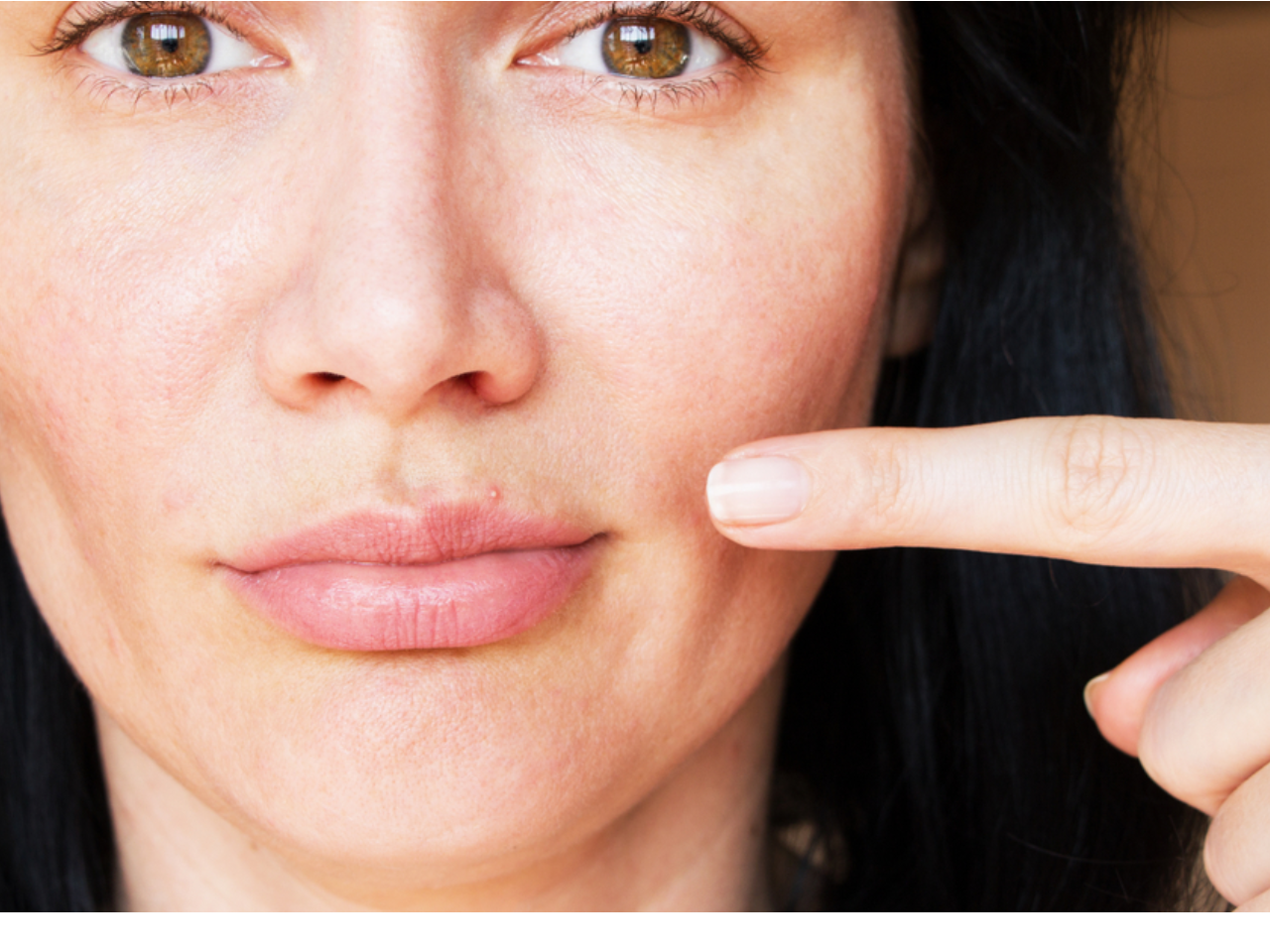
Use an absorbent diaper and wrap it loosely. Consider changing diapers on a schedule to decrease the amount of time your baby is in a wet diaper. OTC creams, such as those with zinc oxide or petrolatum, may be useful.
If the diaper rash looks infected or doesn’t go away in a few days, see a doctor.
If you or your child have a skin rash that doesn’t go away or rapidly gets worse, it’s important to see a doctor. Skin rashes can have many causes and the treatment is often very specific. You should also see a doctor if the rash isn’t getting better with treatment.
Red rashes can have many different causes. The doctor will want to rule out other possibilities, such as psoriasis or allergic reactions.
If they suspect it’s intertrigo and infection, they’ll likely test for a fungal, bacterial, or viral cause. A doctor may take a skin scraping or swab of the rash to send to a lab for a culture. They may also look at it under a microscope or special lamp.
Few scientific studies of intertrigo have measured what preventive care works and what doesn’t. But there are measures you can take that may work for you:
But there are measures you can take that may work for you:
- Keep the skin area clean, dry, and aerated.
- Maintain a skin care routine of cleaning, moisturizing, and applying a skin barrier to protect the area.
- Use fragrance-free soaps and other skin products to minimize irritation.
- Use a powder, such as Zeasorb AF, on the area once or twice a day.
- Minimize exposure to sweat, urine, or feces. If you’re incontinent, use special products to absorb moisture.
- Use a dehumidifier if you live in humid conditions.
- Use an air conditioner to avoid being in high heat.
- If you have diabetes, keep it under control.
- Shower after exercise and dry off completely before dressing.
- Don’t wear tight clothing or shoes that can constrict the affected area. If your toes are affected, wear open-toe shoes.
- Wear loose clothing and breathable fabrics such as cotton.
Intertrigo doesn’t usually cause any complications, but it can lead to more serious infections if it isn’t treated properly.
Bacterial intertrigo can lead to cellulitis, which is a skin infection that can spread to the deeper layers of the skin and the lymph nodes. Cellulitis can be serious and may require hospitalization.
Fungal intertrigo can lead to a more serious infection such as candidemia, a condition in which the yeast infection spreads through the bloodstream. Candidemia can be life threatening.
Intertrigo can also worsen other skin conditions such as psoriasis, eczema, and dermatitis.
Anyone can get intertrigo, but some conditions can increase your risk. You’re more at risk if:
- you have a weakened immune system
- you have excess skin
- you have diabetes
- you have poor hygiene habits
- you’re immobile
- you’re incontinent
- you wear a splint, brace, or an artificial limb that rubs your skin
- you live or work in high heat and humidity
- you sweat excessively (hyperhidrosis)
- your clothing or shoes are too tight
- you have an inflammatory skin condition
Infants are also at a higher risk because their skin is more sensitive.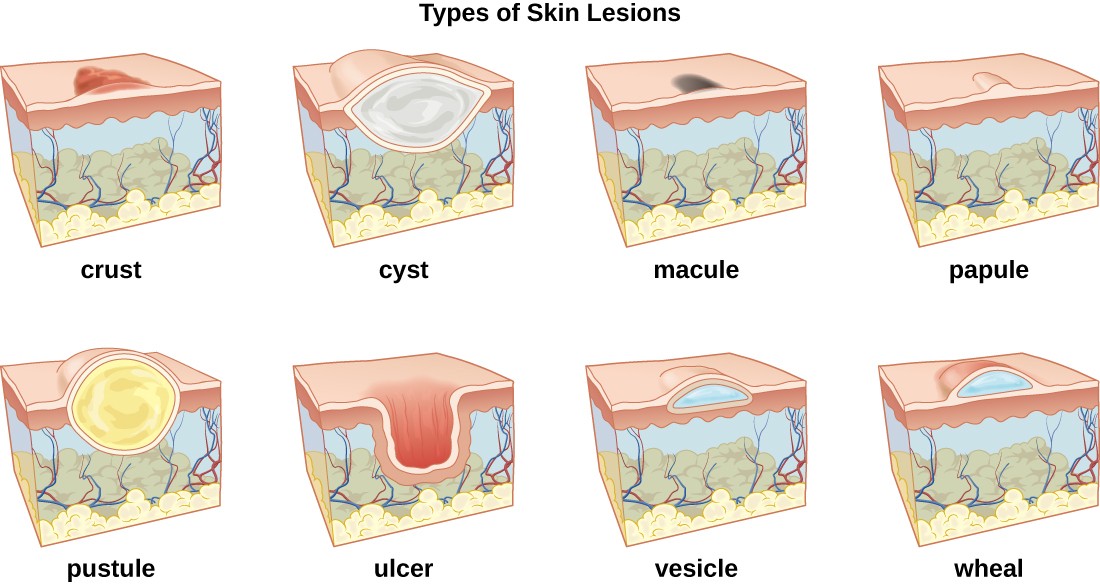 They also tend to have skin rolling (like the folds of the neck) and are more likely to have damp skin from drooling and from wearing diapers.
They also tend to have skin rolling (like the folds of the neck) and are more likely to have damp skin from drooling and from wearing diapers.
Below are some frequently asked questions about intertrigo.
Does poor hygiene cause intertrigo?
Poor hygiene can cause or worsen intertrigo, but you can get intertrigo even if you practice good hygiene habits. It’s important to clean the affected area, but you also need to be careful not to irritate the skin.
What does intertrigo look like?
Intertrigo usually looks like a rash. The affected skin is usually red, inflamed, and moist. It can also be scaly, crusted, or have blisters. The rash often has well defined edges where it meets the surrounding skin.
Can tight clothing cause intertrigo?
Tight clothing can rub the skin and cause or worsen intertrigo. It’s best to wear loose fitting, breathable clothing made from natural fabrics, such as cotton.
Can I use over-the-counter (OTC) treatments for intertrigo?
OTC treatments, such as barrier creams and powders, can help treat intertrigo. But if the rash doesn’t go away after a week or two, or if it gets worse, you should see a doctor. You should also see a doctor if you have any symptoms of a skin infection, such as redness, swelling, pain, pus, or fever.
But if the rash doesn’t go away after a week or two, or if it gets worse, you should see a doctor. You should also see a doctor if you have any symptoms of a skin infection, such as redness, swelling, pain, pus, or fever.
Intertrigo is a common and treatable condition. People with intertrigo who are otherwise healthy have a good outlook. If a secondary infection is involved, it’s important to treat the cause until the symptoms are gone.
In some cases, intertrigo can become chronic. Maintaining a good skin cleaning and moisturizing routine can help prevent intertrigo from coming back. Talk with a doctor if you have questions about your skin or if the rash doesn’t go away with self-care.
Treatment, Signs, Pictures, and Prevention
Intertrigo is a skin condition that can occur anywhere on the body where skin touches skin. Medical treatment and at home prevention can help clear the rash and reduce irritation.
Skin conditions commonly affect the folds of the skin, especially when the skin is wet or sweaty.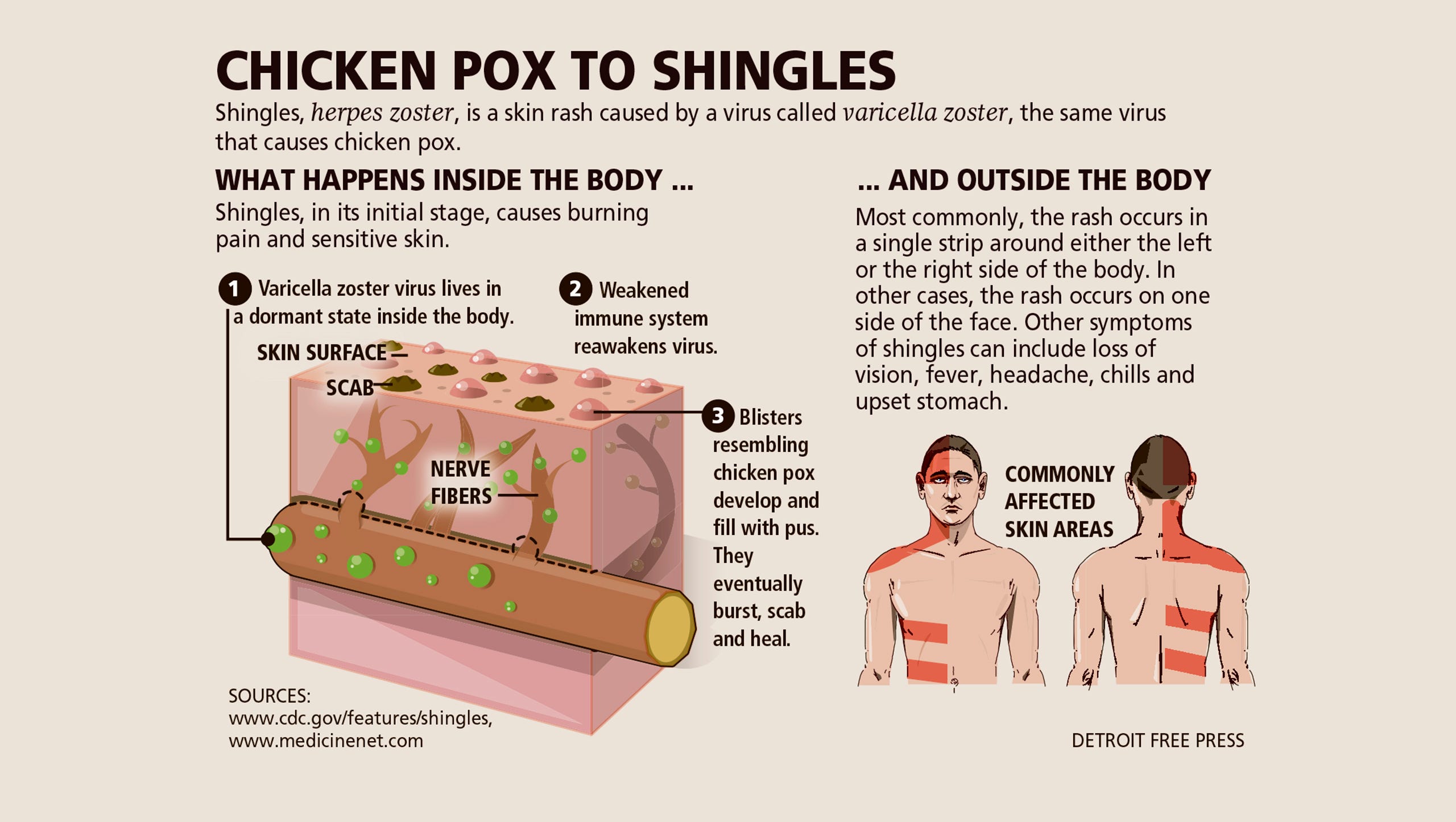 This can lead to irritation, inflammation, and even infection. Intertrigo, a common skin condition that can occur in the folds of the skin, is characterized by red, inflamed skin that may be itchy or painful.
This can lead to irritation, inflammation, and even infection. Intertrigo, a common skin condition that can occur in the folds of the skin, is characterized by red, inflamed skin that may be itchy or painful.
The good news? With some know-how, you can often treat it at home and prevent it from returning. Here’s how to spot an intertrigo rash and what you can do about it at home and with a doctor’s help.
Intertrigo is a reddish rash that appears in skin folds, where your skin surfaces rub against each other. The rash can be itchy or painful, but it’s not contagious.
Bacteria, fungus, and viruses can easily grow in this warm and moist environment and worsen the rash.
The skin areas most often affected include your:
- armpits
- underneath and between breasts
- groin
- buttocks
- between toes
Friction from skin rubbing on skin, moisture, and higher temperature in flexural areas are the main factors in the development of intertrigo.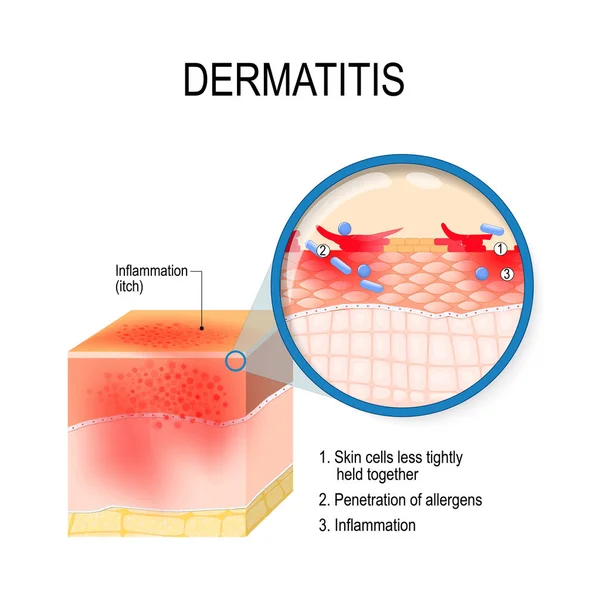
These areas are often moist, warm, and lack air exposure. This makes them perfect breeding areas for microorganisms. These bacteria or fungi worsen the rash and its symptoms.
Secondary intertrigo infections could include:
Fungi
Candida (a yeast) is the fungus group that’s most commonly associated with intertrigo. About 80% to 90% of all skin yeast infections are caused by Candida albicans (also called thrush).
Most people normally have some Candida albicans present on their skin, so the yeast can easily take advantage of skin breaks to proliferate. A Candida rash is very bright red and raw looking. It may have plaques, which are raised, scaly lesions. Papules and pustules (pimple-like bumps) may be present as well.
Bacteria
Bacteria associated with intertrigo include:
- staphylococci
- streptococci
- Pseudomonas
- Corynebacterium
Viruses
The most common virus families associated with intertrigo are:
- Poxviridae
- Papillomaviridae (human papilloma virus or HPV)
- Picornaviridae
- Retroviridae (HIV)
- Herpesviridae
- Togaviridae
- Parvoviridae
In some cases, intertrigo occurs as a side effect of chemotherapy treatment.
Intertrigo starts as redness or small bumps or spots in skin folds. The rash can feel:
- itchy
- uncomfortable
- burning
- prickly
- painful
The intertrigo often appears on both sides of the skin fold, almost like a mirror image. Infections are more likely to be unilateral and asymmetrical, while inflammatory disorders tend to be symmetrical, appearing, for example, under both arms or both breasts.
The reddish area can quickly become inflamed and raw. The skin may crack, bleed, ooze, and crust over. The surrounding area may become scaly.
If you have a secondary infection from bacteria, fungus, or a virus, the intertrigo becomes more inflamed and can develop a bad smell. Intertrigo with a secondary infection is often asymmetrical (not even or present on both sides).
You may have intertrigo in more than one skin area. Also, smaller skin fold areas, such as behind your ears, around your chin, or on your eyelids, can be affected.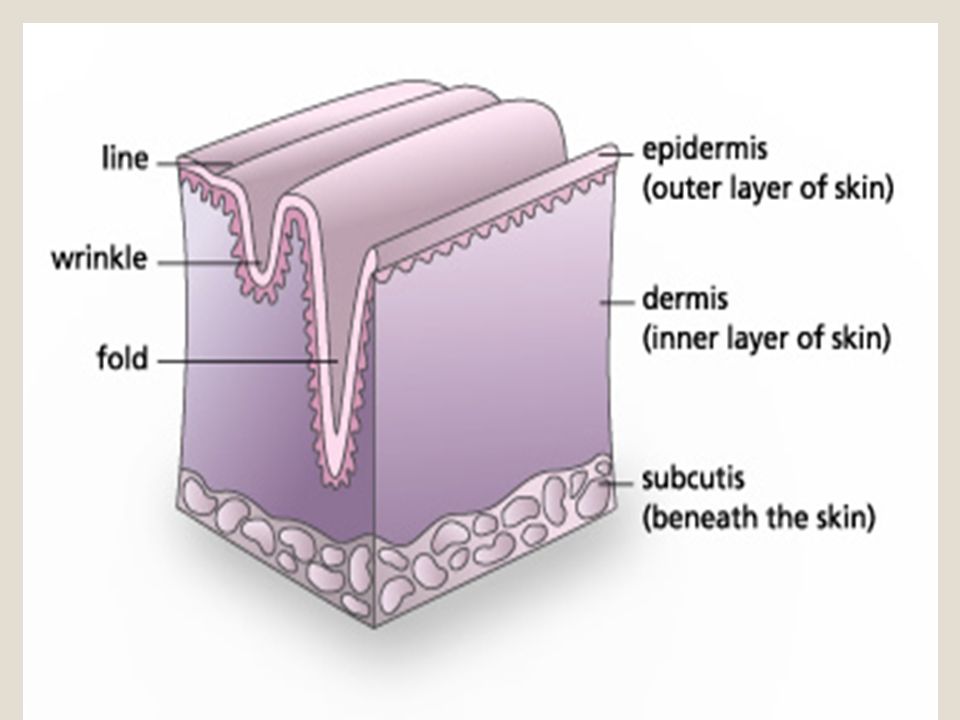
Intertrigo symptoms often get worse when the area comes in contact with your bodily secretions, such as sweat, urine, or feces.
Intertrigo is common and can occur at any age, but according to a 2014 article, it’s more common in the very young and in older people. In babies, intertrigo most often appears as diaper rash.
People with a weakened immune system or who are incontinent or immobile are more likely to have intertrigo. It’s also more common in hot and humid weather.
Treatment for intertrigo is usually a skin cream and a good home hygiene regimen to keep the area clean and dry. The type of topical drug depends on whether bacteria or yeast are involved. In more severe cases, you may need to take oral medication.
When intertrigo is inflammatory only, with no infection, treatment is straightforward: Keep the area clean and dry and follow some of the home remedy suggestions below.
There are also several solutions that may help to control intertrigo. A doctor may suggest:
A doctor may suggest:
- antiperspirants
- triple paste with zinc oxide, aluminum acetate, and petrolatum
- petroleum jelly (Vaseline)
- talcum powder
If you have an infection with the intertrigo, the doctor will prescribe specific topical creams.
Your treatment for intertrigo will depend on the cause and the type of infection you have. We’ll go over bacterial and yeast infections below.
In extreme cases, some women have undergone breast reduction surgery to reduce chronic intertrigo.
Keep it clean and dry
The number one rule is to keep the area clean and dry.
If you exercise, shower afterward and pat yourself dry. Don’t rub your skin, as this can cause increased irritation and damage to the skin.
Use anti-chafing or barrier gels
If the intertrigo is inflammatory only, without an infection, use over-the-counter (OTC) creams to create a barrier between the skin folds. Creams or ointments with zinc oxide or petrolatum can be useful. There are also anti-chafing balms that come in stick form.
There are also anti-chafing balms that come in stick form.
Block the sweat
Use a mild antiperspirant to stop sweating, including under your breasts.
OTC antifungal creams
If you have a fungal infection, try using use an OTC antifungal cream on the affected area for 2 to 4 weeks.
Create a physical barrier
Depending on the affected area, use a thin cotton or gauze barrier to separate the skin folds.
Wear loose clothing and breathable fabrics
Wear loose cotton clothing next to your skin and avoid synthetic materials that can be irritating.
Topical antifungals used for intertrigo are nystatin (for Candida) and azole drugs, including miconazole (Mitrazol), ketoconazole (Nizoral topical), or clotrimazole (Lotrimin AF cream).
You usually use the cream twice a day for 2 to 4 weeks.
If your rash is very itchy, the doctor may also prescribe an antifungal combined with a low dose corticosteroid.
Depending on the severity of the infection, a doctor may prescribe a systemic antifungal drug that you’d take by mouth.
Topical antibiotics are used for bacterial infections. These include bacitracin or mupirocin (Bactroban).
If the infection is more severe, the doctor may prescribe an oral antibiotic, such as flucloxacillin or erythromycin (Erythrocin).
The doctor may also prescribe a low potency corticosteroid and advise you to use an antibiotic soap.
Intertrigo in babies requires special care because the affected skin area is so delicate. Keep the area clean, wash it gently with mild soap, and pat it dry.
Use an absorbent diaper and wrap it loosely. Consider changing diapers on a schedule to decrease the amount of time your baby is in a wet diaper. OTC creams, such as those with zinc oxide or petrolatum, may be useful.
If the diaper rash looks infected or doesn’t go away in a few days, see a doctor.
If you or your child have a skin rash that doesn’t go away or rapidly gets worse, it’s important to see a doctor. Skin rashes can have many causes and the treatment is often very specific. You should also see a doctor if the rash isn’t getting better with treatment.
You should also see a doctor if the rash isn’t getting better with treatment.
Red rashes can have many different causes. The doctor will want to rule out other possibilities, such as psoriasis or allergic reactions.
If they suspect it’s intertrigo and infection, they’ll likely test for a fungal, bacterial, or viral cause. A doctor may take a skin scraping or swab of the rash to send to a lab for a culture. They may also look at it under a microscope or special lamp.
Few scientific studies of intertrigo have measured what preventive care works and what doesn’t. But there are measures you can take that may work for you:
- Keep the skin area clean, dry, and aerated.
- Maintain a skin care routine of cleaning, moisturizing, and applying a skin barrier to protect the area.
- Use fragrance-free soaps and other skin products to minimize irritation.
- Use a powder, such as Zeasorb AF, on the area once or twice a day.
- Minimize exposure to sweat, urine, or feces.
 If you’re incontinent, use special products to absorb moisture.
If you’re incontinent, use special products to absorb moisture. - Use a dehumidifier if you live in humid conditions.
- Use an air conditioner to avoid being in high heat.
- If you have diabetes, keep it under control.
- Shower after exercise and dry off completely before dressing.
- Don’t wear tight clothing or shoes that can constrict the affected area. If your toes are affected, wear open-toe shoes.
- Wear loose clothing and breathable fabrics such as cotton.
Intertrigo doesn’t usually cause any complications, but it can lead to more serious infections if it isn’t treated properly.
Bacterial intertrigo can lead to cellulitis, which is a skin infection that can spread to the deeper layers of the skin and the lymph nodes. Cellulitis can be serious and may require hospitalization.
Fungal intertrigo can lead to a more serious infection such as candidemia, a condition in which the yeast infection spreads through the bloodstream. Candidemia can be life threatening.
Candidemia can be life threatening.
Intertrigo can also worsen other skin conditions such as psoriasis, eczema, and dermatitis.
Anyone can get intertrigo, but some conditions can increase your risk. You’re more at risk if:
- you have a weakened immune system
- you have excess skin
- you have diabetes
- you have poor hygiene habits
- you’re immobile
- you’re incontinent
- you wear a splint, brace, or an artificial limb that rubs your skin
- you live or work in high heat and humidity
- you sweat excessively (hyperhidrosis)
- your clothing or shoes are too tight
- you have an inflammatory skin condition
Infants are also at a higher risk because their skin is more sensitive. They also tend to have skin rolling (like the folds of the neck) and are more likely to have damp skin from drooling and from wearing diapers.
Below are some frequently asked questions about intertrigo.
Does poor hygiene cause intertrigo?
Poor hygiene can cause or worsen intertrigo, but you can get intertrigo even if you practice good hygiene habits.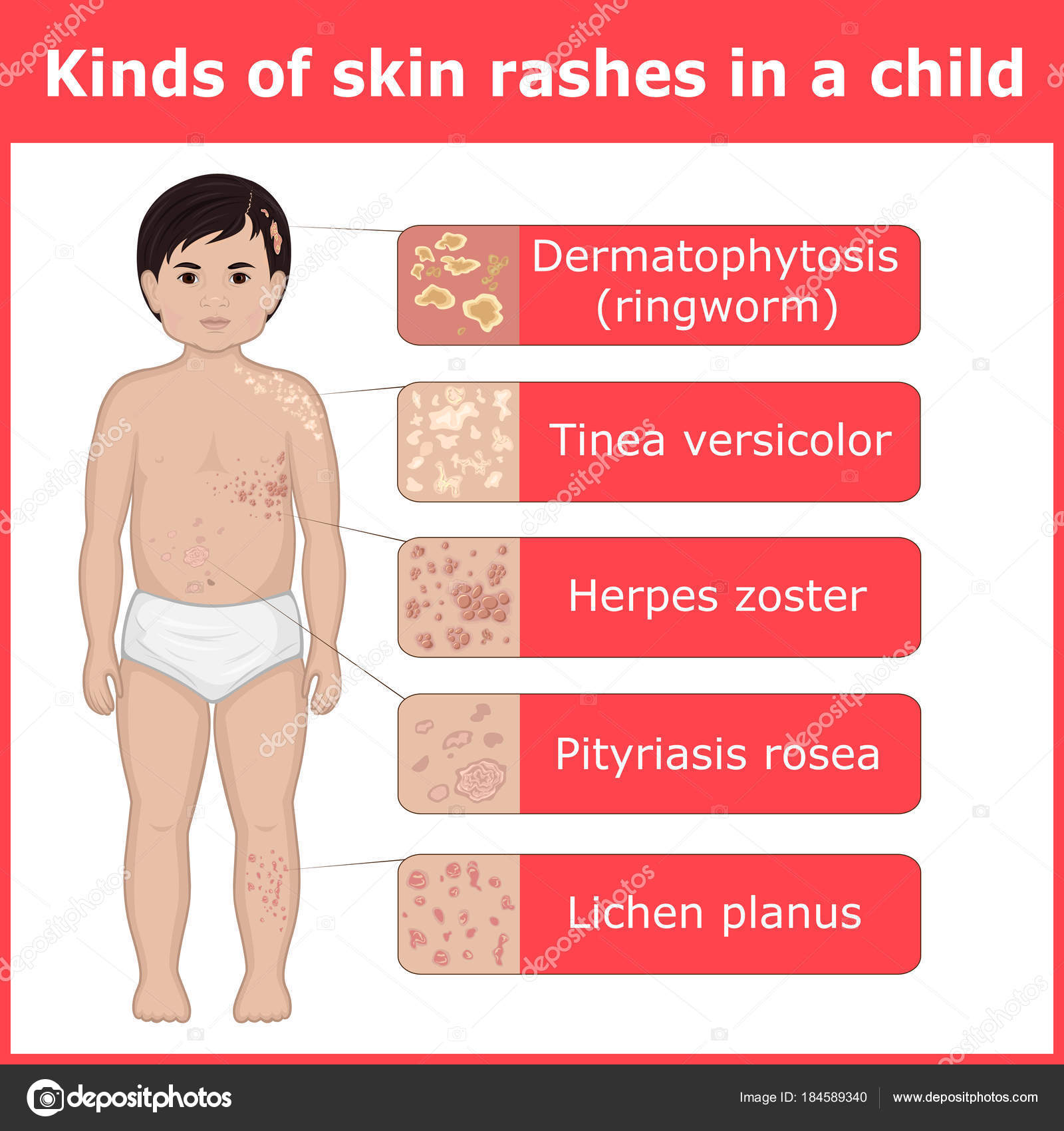 It’s important to clean the affected area, but you also need to be careful not to irritate the skin.
It’s important to clean the affected area, but you also need to be careful not to irritate the skin.
What does intertrigo look like?
Intertrigo usually looks like a rash. The affected skin is usually red, inflamed, and moist. It can also be scaly, crusted, or have blisters. The rash often has well defined edges where it meets the surrounding skin.
Can tight clothing cause intertrigo?
Tight clothing can rub the skin and cause or worsen intertrigo. It’s best to wear loose fitting, breathable clothing made from natural fabrics, such as cotton.
Can I use over-the-counter (OTC) treatments for intertrigo?
OTC treatments, such as barrier creams and powders, can help treat intertrigo. But if the rash doesn’t go away after a week or two, or if it gets worse, you should see a doctor. You should also see a doctor if you have any symptoms of a skin infection, such as redness, swelling, pain, pus, or fever.
Intertrigo is a common and treatable condition. People with intertrigo who are otherwise healthy have a good outlook. If a secondary infection is involved, it’s important to treat the cause until the symptoms are gone.
People with intertrigo who are otherwise healthy have a good outlook. If a secondary infection is involved, it’s important to treat the cause until the symptoms are gone.
In some cases, intertrigo can become chronic. Maintaining a good skin cleaning and moisturizing routine can help prevent intertrigo from coming back. Talk with a doctor if you have questions about your skin or if the rash doesn’t go away with self-care.
Rash on the body | causes, symptoms, types of skin rashes, treatment
Human skin is an indicator of the state of his body. Various rashes on the skin of the abdomen, chest, face, arms and legs appear depending on diseases of the internal organs, being symptoms of allergies, viral or infectious infections. A rash is a change in the condition of the skin on different parts of the human body, which differ in location, rate of appearance, stage of development, filling, color and texture.
Rashes can cause various discomforts. It happens that the rash has an unclear origin and appears for non-specific reasons, so you should consult a doctor in a timely manner to prevent complications and infection of other people if the disease is contagious.
Prices
| Primary appointment (examination, consultation) with an allergist-immunologist | 1500 ₽ |
| Repeated appointment (examination, consultation) with an allergist-immunologist | 1350 ₽ |
| Appointment with a dermatovenereologist (primary) | 1500 ₽ |
See all prices
Contents
- Types of skin rashes
- Allergic rash
- Rash in infectious diseases
- Skin rash
- Treatment
Types of skin rashes
The rash can be either primary or secondary. The primary is observed on a healthy body. If the primary satiety has not been treated, then a secondary rash appears on the same places in the dermis.
The primary is observed on a healthy body. If the primary satiety has not been treated, then a secondary rash appears on the same places in the dermis.
Primary skin rashes
Due to various diseases, the following types of primary rash are formed:
- Papule (nodule) – a bulge of a different consistency, without content, which passes without a trace. It is often in the shape of a cone or circle. Papules merging with each other, are quite large. They are divided into 3 groups by size: the smallest from 1 to 3 mm, medium, large – from 1 to 4 cm. Papules differ in the presence of an inflammatory process.
- Knot – a protruding part of the skin that does not have a cavity with dimensions up to 10 cm. It can be both inflammatory and non-inflammatory rash, after resolution, a scar remains.
- Tubercle is a raised skin lesion about 1 cm in size, without internal filling. The bumps may change color. They leave scars behind.

- Pustule – Vesicle with pus covered with a thin film on top. The skin around the pustule is inflamed. Types of pustules:
- Conflicts are non-follicular ulcers on the surface of the skin that look like blisters with pus. The skin around is reddish due to inflammation. When the conflicts pass, the resulting crust disappears, and the pigmentation still lasts for some time.
- Ecthymas are non-follicular deep pustules with a purulent bottom, after which scars form on the skin.
- Superficial follicular pustules sizes from 1 to 5 mm are partially located in the follicle, affecting only the papillary layer. By resolution, there are no scars, no pigmentation, no scars.
- Deep follicular pustules occupy not only the entire follicle, but also all layers of the dermis, so after treatment they leave scars. They have varieties such as boils and carbuncles.
 At the base, it can be both rounded and irregular in shape. After a few days, the blister disappears without leaving a trace. The causes of its occurrence are allergies, urticaria, toxicoderma, bites.
At the base, it can be both rounded and irregular in shape. After a few days, the blister disappears without leaving a trace. The causes of its occurrence are allergies, urticaria, toxicoderma, bites.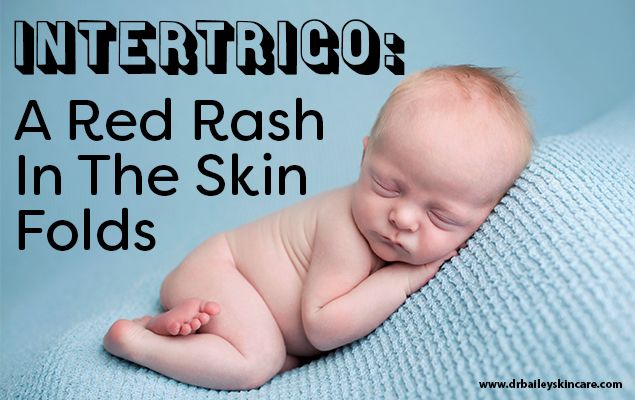 With roseola, uneven spots can blur the borders. A distinctive feature is blanching of the skin when pressed and the absence of a bulge.
With roseola, uneven spots can blur the borders. A distinctive feature is blanching of the skin when pressed and the absence of a bulge.Secondary rashes
They are caused by the lack of treatment of primary lesions, as a rule, due to not timely access to a doctor, or the lack of results of self-treatment. Morphological elements of secondary rashes include:
- Hyperpigmentation, depigmentation, when the skin becomes either darker or discolored.
- Superficial or deep scars and abrasions that remain after scratching or are part of the resolution of dermatological diseases such as neurodermatitis, eczema, etc.

Common types of secondary skin manifestations:
- eschar – formation on the skin after bursting of vesicles, pustules and sores in the form of a crust, the color of which depends on the content.
- plaques – skin lesions more than 5 mm, rising above the level of the skin, which are formed as a result of the connection of several papules. Their boundaries depend on the disease, for example, in psoriasis they are clear.
- erosion – changes resulting from the opening of the vesicle and abscess and affecting only the upper layers of the skin of the face, genitals, hands. They indicate an inflammatory process, do not leave scars.
- ulcers – recurrent defects with violation of the integrity of the skin, which capture all layers – to the subcutaneous fat. Characterized by a long course, difficult healing. Treatment leaves scars. Typically, in people with diabetes, they affect the legs.

- scales – flaking of the dying upper layer of the skin in the form of particles. Separating horny plates, depending on the disease, are of different colors: white, gray, brown, yellow. For example, as a result of seborrheic dermatitis, eczema, lichen, psoriasis, white scales form.
- lichenification – indurated and dry areas of the skin of a pinkish tint, with increased pattern and pigmentation. Against the background of ulcers, eczema and neurodermatitis, as a result of scratching, the skin becomes covered with abrasions and crusts, which are formed due to the drying of the weeping surface departments in place of bursting vesicles, pustules.
Allergic rash
Rash appears on the skin due to an allergy that releases histamine. Thanks to the work of immune cells, trying to remove a foreign object from the body, blood vessels dilate, inflamed skin swells.
- Urticaria – allergic rash with severe itching, red swollen spots on the abdomen, chest, limbs, less often on the face, which quickly appear and change shape and location.

- Contact dermatitis manifests itself at the site of close contact with the allergen and is accompanied by additional symptoms such as lacrimation, runny nose, headache, palpitations, convulsions, nausea.
- Dermatitis is observed against the background of the direct effect of the allergen on the skin, digestive system, respiratory tract.
List of main allergens:
- pet hair;
- pollen from flowering plants;
- medicines (antibiotics, sulfa drugs, hormonal pills, vitamins, etc.)
- food products and additives;
- cosmetics, whether decorative or caring;
- dust and smoke smell;
- various metals and artificial fabrics.
Rashes in infectious diseases
When infected with a virus, infectious rashes can occur in both adults and children. In some cases, they are placed only in some places, and sometimes they cover the body completely:
- Chicken pox begins with round pink rashes that are found on the whole body, even on the scalp, on mucous membranes, and sometimes on the palms and feet.
 Subsequently, itchy blisters with liquid inside form in this place. After 2-3 days they dry up and crusts appear. At the same time, manifestations of different stages coexist on the body. Smallpox can last from 5 to 10 days.
Subsequently, itchy blisters with liquid inside form in this place. After 2-3 days they dry up and crusts appear. At the same time, manifestations of different stages coexist on the body. Smallpox can last from 5 to 10 days. - In case of rubella , at first a red small rash with a diameter of up to 10 mm in a round shape appears on the neck and on the skin of the face, then the rash spreads to the body. As a rule, pimples pass in 2 – 4 days. It happens that the disease drags on for a week, and then the rashes disappear, leaving no traces of pigmentation.
- measles is characterized by a purple rash that becomes visible on the second day. They may appear in sequence. They first affect the neck, face, area behind the ears, and after a day they already spread to the body. The rash then covers the entire body, including the palms and soles, including the fingers. The elements of the rash tend to connect. In the future, they gradually subside. Within a week and a half, the skin affected by the rash remains in color, like age spots.

- With scarlet fever small red rashes stand out on the skin. Numerous spots cover the entire body, but are especially intense in the folds of the skin, on the lower abdomen, in the groin, on the back and on the sides of the body. Sometimes the skin turns blue. A characteristic feature is the absence of rashes in the region of the nasolabial triangle formed by the corners of the mouth and the bridge of the nose. Within 3 to 7 days, the rash disappears without leaving pigmentation. However, then the skin peels off, and leaves the arms and legs in layers.
- Herpes – blisters with fluid rounded on the lips or body. During the healing process, yellow or dark crusts first remain on the skin, which disappear with time.
- Herpes zoster – vesicles up to 5 mm in size on one side of the body. As a rule, it is in patients with chickenpox. Accompanied by pain, severe itching. After them, depressions, scars or age spots remain.
- With syphilis the rash is located on the chest, in the groin and appears with secondary syphilis.
 For the first time, red rashes are plentiful and symmetrical, subsequent ones are unsaturated.
For the first time, red rashes are plentiful and symmetrical, subsequent ones are unsaturated. - Candidiasis is accompanied by blisters that burst, leaving cracks with whitish content and erosion in the folds of the body due to friction.
- For scabies , the characteristic appearance is scabies, papules, vesicles, blisters that are visible to the naked eye.
- With ostiofolliculitis skin changes in the form of purulent pustules with a pink border appear on the folds, on the face, on the head in the hair. Then crusts form on the skin, and then they fall off – age spots.
Intoxication of the body, which is accompanied by an increase in body temperature, occurs with enterovirus infection, tuberculosis and other infectious diseases. However, it is impossible to make a diagnosis on your own, because the symptoms are mild, and rashes are often absent. Seriousness is indicated by skin manifestations along with other pathological symptoms.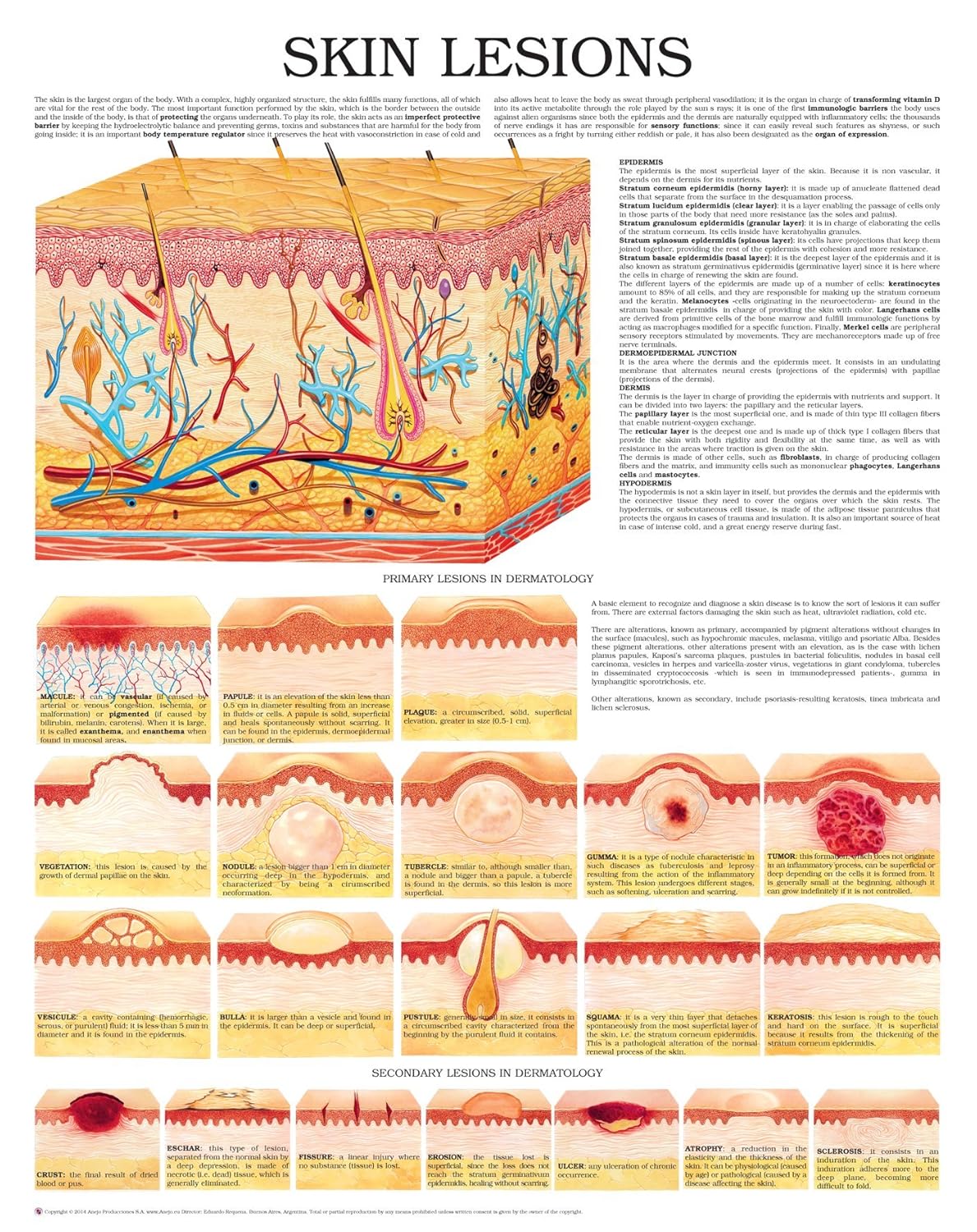
For example, the initial symptoms of blood poisoning are similar to the flu – high fever, vomiting. A distinctive feature is hemorrhagic petechial hemorrhages due to rupture of superficial capillaries. This is a sign of deadly meningococcal sepsis, which develops rapidly, so an ambulance is called immediately.
Rash in skin diseases
Eruptions can cause the following skin diseases:
- acne (acne) – manifests itself in the form of ulcers on the nose, forehead, cheeks and chin;
- psoriasis ;
- fungal diseases ;
- scabies caused by microscopic parasites.
In young children, reddening of the skin may be caused by insect bites or prickly heat, a typical reaction to overheating.
These are not all diseases that are accompanied by a skin rash.
Treatment
Do not try to determine the cause of the rash yourself, as you can be mistaken.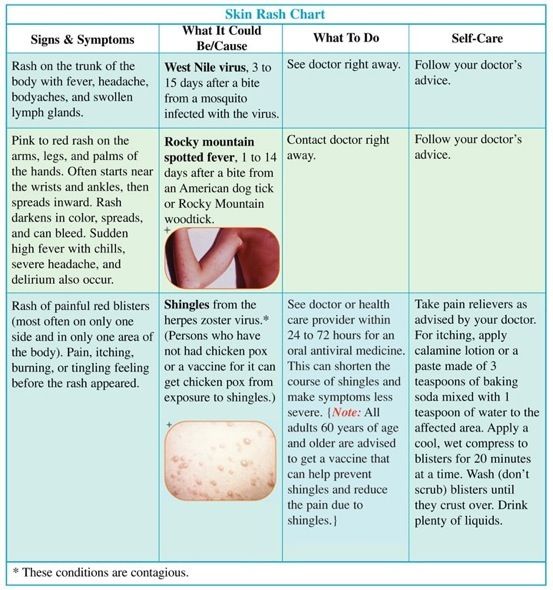 In the case of skin rashes, it is necessary to seek advice from a dermatologist, pediatrician or general practitioner. If you have allergies, you need to see an allergist, an immunologist. With self-administration of antihistamines, there is no complex treatment, therefore, acute allergic reactions may occur in the future. Often the rash has a non-specific appearance, so it should be treated by a qualified specialist based on diagnostic tests and clinical test results.
In the case of skin rashes, it is necessary to seek advice from a dermatologist, pediatrician or general practitioner. If you have allergies, you need to see an allergist, an immunologist. With self-administration of antihistamines, there is no complex treatment, therefore, acute allergic reactions may occur in the future. Often the rash has a non-specific appearance, so it should be treated by a qualified specialist based on diagnostic tests and clinical test results.
Make an appointment
If you have any rash, you can make an appointment with a dermatovenereologist for a detailed diagnosis. Treatment in our medical center is carried out by experienced specialists, doctors of the highest category, who use modern methods to prevent allergic and chronic diseases. Registration is available online or by phone.
Physicians
Who treat rashes and various skin eruptions
Vitalieva Ekaterina Eduardovna
allergist-immunologist
Learn more
Tikhonova Olga Anatolyevna
dermatovenereologist
Learn more
diagnosis of skin rash in the clinic, prices for dermatologist services in Moscow
Prices Appointment with a dermatologist Call a dermatologist at home Pimples
Skin rash is the general name for a huge group of external skin changes that can be caused by a wide range of different diseases. Traditionally, it is believed that any skin rash is exclusively infectious, but experts are diligently fighting this erroneous point of view. In fact, a skin rash can appear for several reasons:
Traditionally, it is believed that any skin rash is exclusively infectious, but experts are diligently fighting this erroneous point of view. In fact, a skin rash can appear for several reasons:
- presence of infectious and parasitic diseases;
- allergic reactions of various etiologies;
- the presence of diseases of the blood and blood vessels;
- non-compliance with the rules of personal hygiene.
Depending on the cause, a skin rash can take completely different forms, which sometimes makes it difficult to diagnose the disease. Only conducting a whole range of examinations allows you to accurately determine the disease and prescribe a qualified treatment.
Skin rash and its varieties
1. Stains. They are areas of the skin that have a different color from the rest of the skin. Their peculiarity lies in the fact that they do not rise above the skin.
2. Blisters. Skin rash slightly rises above healthy areas of the skin, differs from them in color.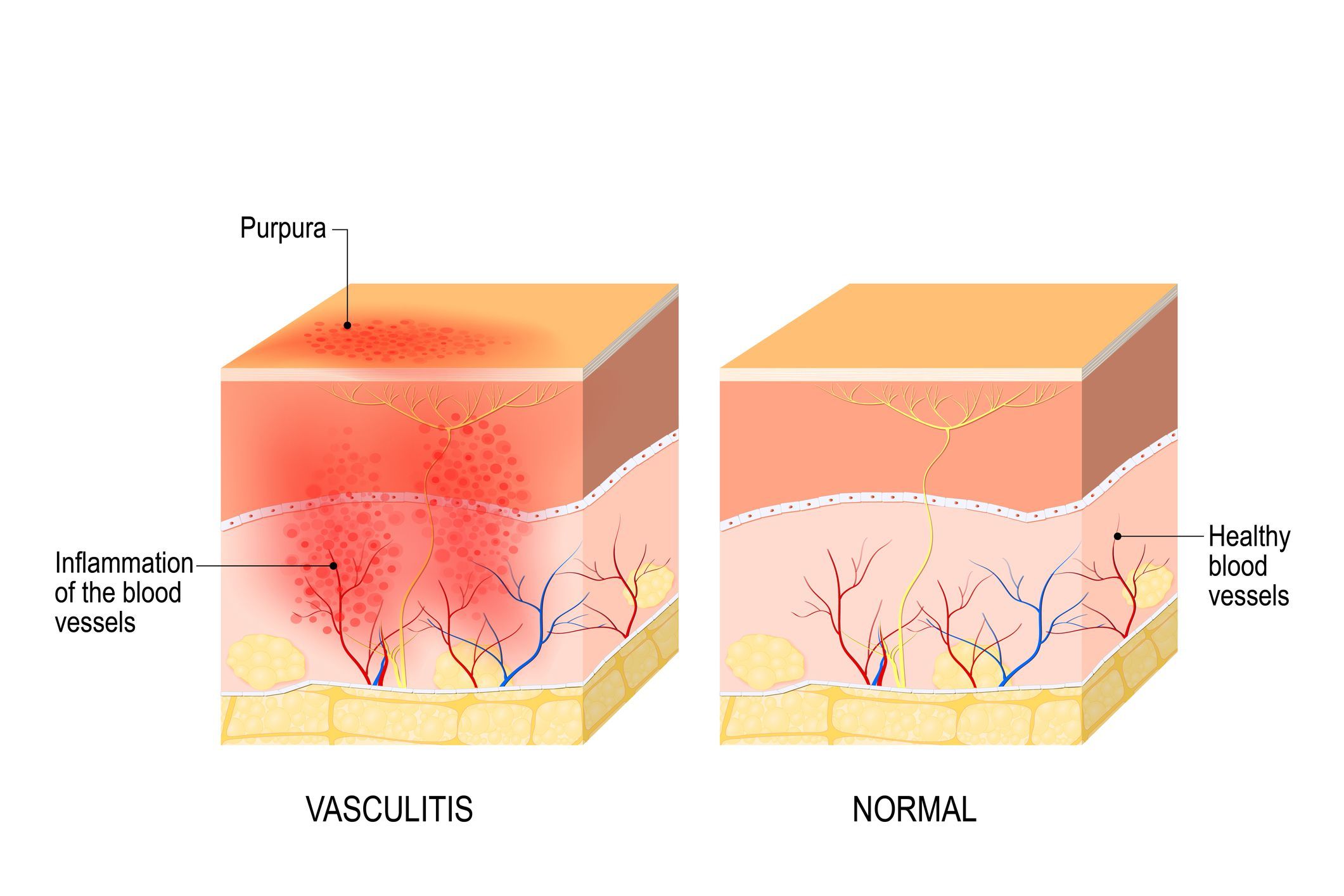 There is also a slight roughness of the surface of such a blister, which is sometimes accompanied by itching.
There is also a slight roughness of the surface of such a blister, which is sometimes accompanied by itching.
3. Papules. Such a skin rash is a small seal inside the skin, a tiny nodule, the size of which does not exceed the head of a pin.
4. Bubbles. Cavities in the skin that are filled with fluid. They can vary greatly in size and other characteristics.
5. Erosions and ulcers. Severe skin lesions, accompanied by a violation of its integrity, in which fluid separation is observed.
6. Crusts. Small seals on the skin that appear at the site of ulcers and erosions. Often the appearance of crusts is associated with the healing process.
Sometimes a skin rash can take on a variety of forms, and in some diseases there are several varieties at once on the body of one patient.
Diseases and skin rashes
- Secondary syphilis is often accompanied by skin rashes that come in a wide variety of forms. The only feature is the symmetrical location of the skin rash, which is quite rare in other diseases.
 At the beginning of the second period, the skin rash is characterized by a bright color, which becomes pale in the second wave of rashes. Such a skin rash passes without a trace, which some patients regard as a sign of recovery.
At the beginning of the second period, the skin rash is characterized by a bright color, which becomes pale in the second wave of rashes. Such a skin rash passes without a trace, which some patients regard as a sign of recovery. - Scabies is accompanied by the appearance of papules or blisters that form at the site of introduction of the pathogen. Near the skin rash, small gray stripes appear, which are the passages of the parasite. Scabies is a contagious disease that needs urgent treatment.
- Candidiasis is a disease that is manifested by a small skin rash, localized in the skin folds. First, small bubbles appear, which gradually burst. Then, in their place, ulcers and erosion appear, which cause severe discomfort to the patient.
- Urticaria are rather large, itchy blisters that appear after contact with an allergen. Such a skin rash is similar to a nettle burn, while the blisters are characterized by rapid spread. After taking antihistamines, hives usually go away.
 However, in difficult cases, it is better to consult a specialist, because edema can go to the respiratory tract, which will lead to the death of a person.
However, in difficult cases, it is better to consult a specialist, because edema can go to the respiratory tract, which will lead to the death of a person.
In general, the list of diseases in which a skin rash appears is much larger, so you should definitely contact a dermatologist or therapist for an accurate diagnosis.
How is a skin rash treated?
- Determine the cause of the skin rash.
- Preparations are selected for the treatment of the underlying disease.
- External drugs are used.
Traditionally, many people believe that skin rashes are treated with brilliant green, iodine, and other similar drugs. In fact, the treatment depends on the disease against which skin rashes appear.
If the skin rash was the result of a meeting with an allergen, it must be calculated and removed, and antihistamines are also prescribed.

 If you’re incontinent, use special products to absorb moisture.
If you’re incontinent, use special products to absorb moisture.



 Subsequently, itchy blisters with liquid inside form in this place. After 2-3 days they dry up and crusts appear. At the same time, manifestations of different stages coexist on the body. Smallpox can last from 5 to 10 days.
Subsequently, itchy blisters with liquid inside form in this place. After 2-3 days they dry up and crusts appear. At the same time, manifestations of different stages coexist on the body. Smallpox can last from 5 to 10 days.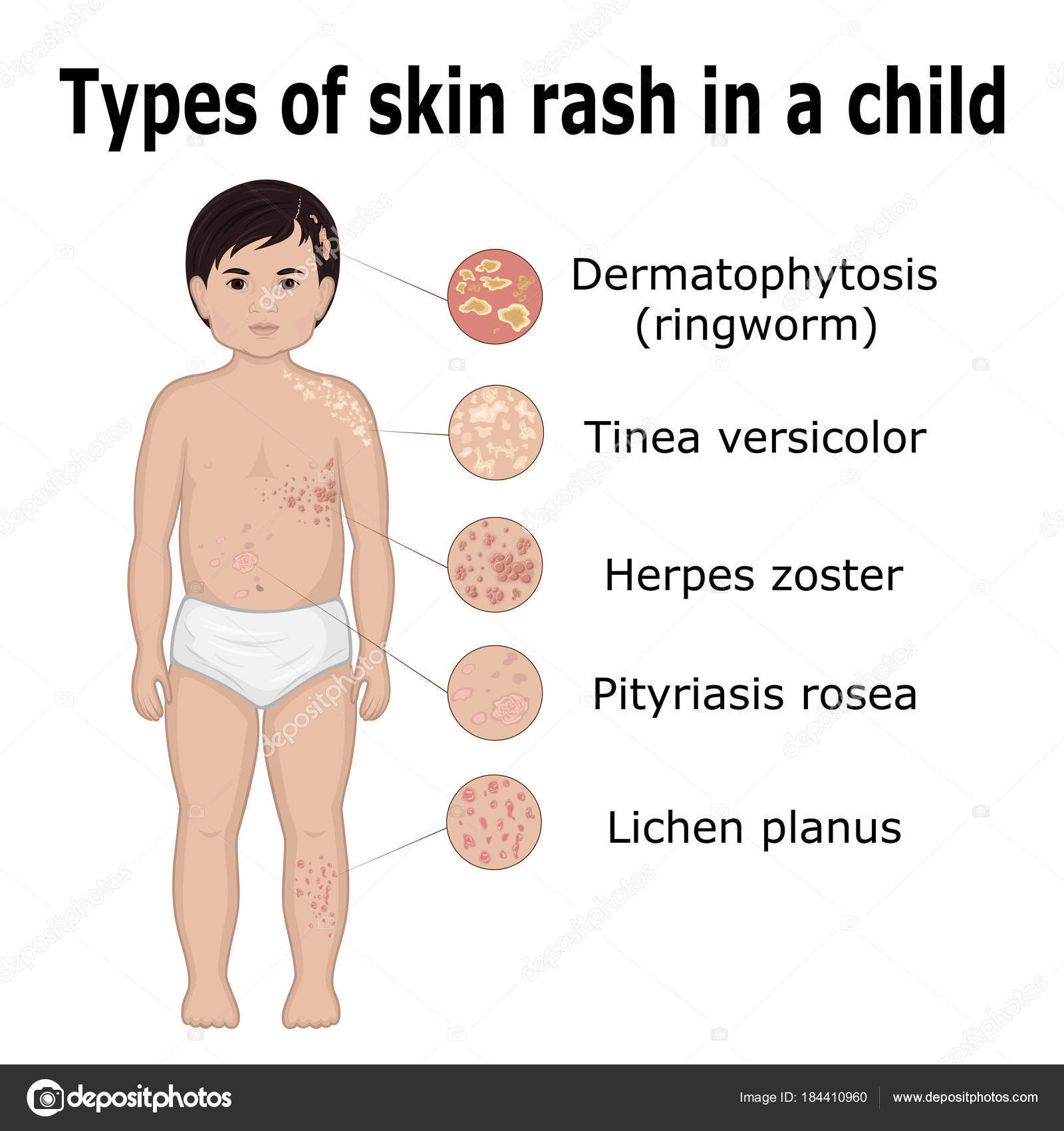
 For the first time, red rashes are plentiful and symmetrical, subsequent ones are unsaturated.
For the first time, red rashes are plentiful and symmetrical, subsequent ones are unsaturated. At the beginning of the second period, the skin rash is characterized by a bright color, which becomes pale in the second wave of rashes. Such a skin rash passes without a trace, which some patients regard as a sign of recovery.
At the beginning of the second period, the skin rash is characterized by a bright color, which becomes pale in the second wave of rashes. Such a skin rash passes without a trace, which some patients regard as a sign of recovery.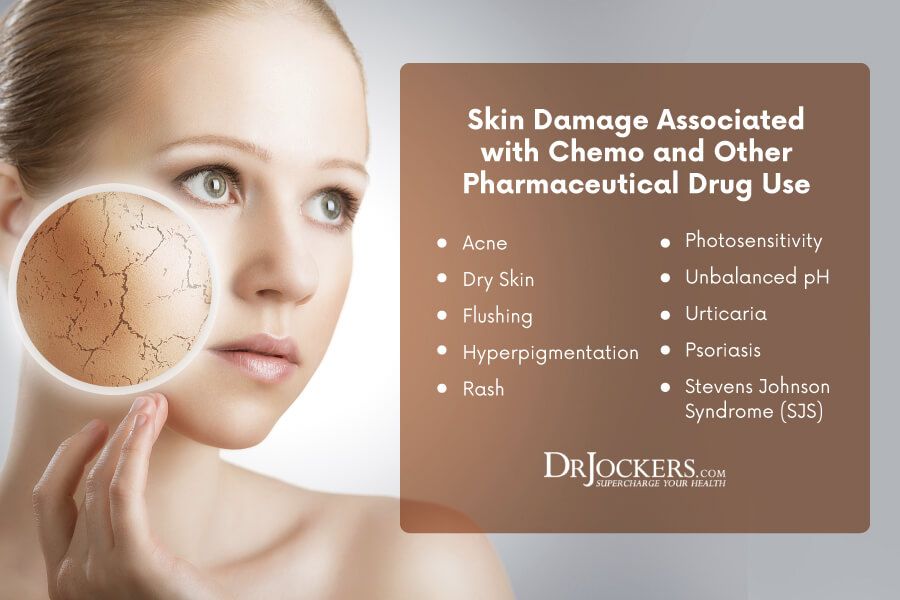 However, in difficult cases, it is better to consult a specialist, because edema can go to the respiratory tract, which will lead to the death of a person.
However, in difficult cases, it is better to consult a specialist, because edema can go to the respiratory tract, which will lead to the death of a person.